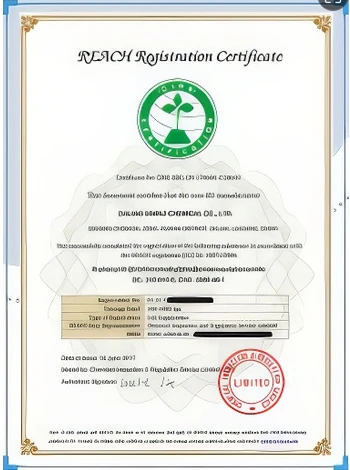



molar mass of lead ii nitrate
Understanding the Molar Mass of Lead(II) Nitrate A Key Concept in Chemistry
Lead(II) nitrate, a chemical compound with the formula Pb(NO3)2, plays a significant role in various industrial applications, ranging from ceramics to explosives. Understanding its molar mass is crucial not only for stoichiometric calculations in chemical reactions but also for practical applications in laboratories and industries.
The molar mass of a compound is the mass of one mole of that substance, expressed in grams per mole (g/mol). To calculate the molar mass of lead(II) nitrate, we first need to break down its formula and determine the individual molar masses of its constituent elements lead (Pb), nitrogen (N), and oxygen (O).
1. Molar Mass of Lead (Pb) Lead is a heavy metal, and its atomic weight is approximately 207.2 g/mol. Being the only metal in lead(II) nitrate, it significantly contributes to the compound's overall mass.
2. Molar Mass of Nitrogen (N) Nitrogen has an atomic weight of about 14.01 g/mol. In lead(II) nitrate, there are two nitrogen atoms because of the two nitrate groups (NO3), giving us a total mass contribution from nitrogen of 2 × 14.01 g/mol = 28.02 g/mol.
3. Molar Mass of Oxygen (O) Oxygen's atomic weight stands at approximately 16.00 g/mol. Since each nitrate group contains three oxygen atoms and there are two nitrate groups in lead(II) nitrate, the total contribution from oxygen is 2 × 3 × 16.00 g/mol = 96.00 g/mol.
With these calculations established, we can now sum them to find the molar mass of lead(II) nitrate
molar mass of lead ii nitrate

- Molar mass of Pb 207.2 g/mol - Molar mass of N 28.02 g/mol - Molar mass of O 96.00 g/mol
Adding these together gives us
\[ \text{Molar mass of Pb(NO3)2} = 207.2 + 28.02 + 96.00 = 331.22 \, \text{g/mol} \]
Therefore, the molar mass of lead(II) nitrate is approximately 331.22 g/mol.
This information is essential for various applications. In laboratories, for example, accurately calculating the molar mass allows chemists to make precise measurements when preparing solutions or conducting reactions involving lead(II) nitrate. In industry, proper understanding of molar masses ensures that materials are combined in the correct ratios, optimizing production efficiency and product quality.
Moreover, lead(II) nitrate is used in the production of lead-based glass and as a precursor in the synthesis of other lead compounds. Understanding its molar mass fosters better safety and regulatory compliance, given the environmental and health concerns associated with lead exposure.
In conclusion, the molar mass of lead(II) nitrate is not just a figure; it is a critical component that facilitates a wide range of chemical applications and ensures precision in scientific practices. Chefs of chemistry continue to rely on such knowledge to push the boundaries of innovation and remain vigilant about safety and environmental impact.
-
Why Sodium Persulfate Is Everywhere NowNewsJul.07,2025
-
Why Polyacrylamide Is in High DemandNewsJul.07,2025
-
Understanding Paint Chemicals and Their ApplicationsNewsJul.07,2025
-
Smart Use Of Mining ChemicalsNewsJul.07,2025
-
Practical Uses of Potassium MonopersulfateNewsJul.07,2025
-
Agrochemicals In Real FarmingNewsJul.07,2025
-
Sodium Chlorite Hot UsesNewsJul.01,2025










